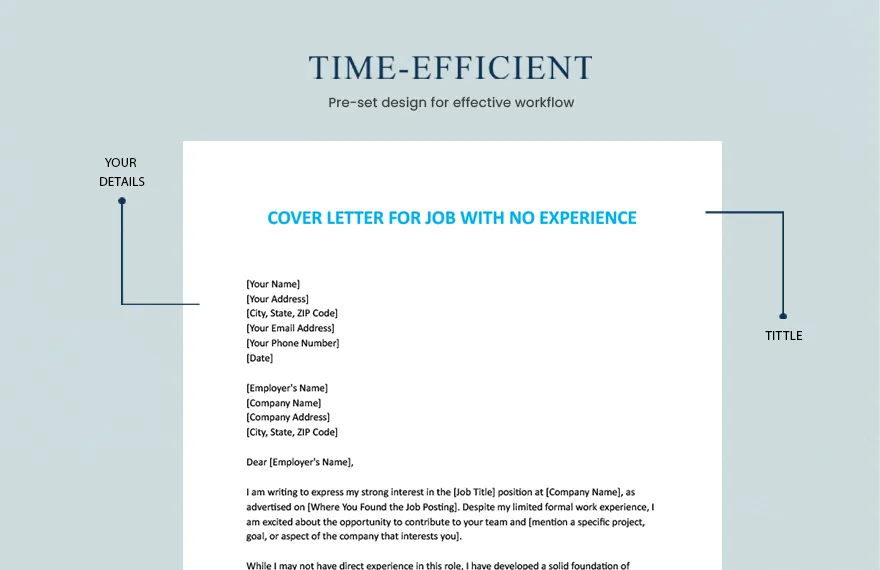Why a Cover Letter is Crucial (Even with No Experience)
Many job seekers, especially those with limited professional experience, often question the necessity of a cover letter. However, a well-crafted cover letter is arguably even more crucial when you lack direct experience. It serves as your primary opportunity to introduce yourself, showcase your personality, and explain why you’re a suitable candidate despite not having a traditional work history. It allows you to paint a narrative that a resume alone cannot. A strong cover letter helps you bridge the gap, demonstrating your potential and enthusiasm to employers who might otherwise overlook your application due to a lack of experience. It also shows that you are willing to go the extra mile, which speaks volumes about your work ethic and commitment.
Highlighting Transferable Skills
Transferable skills are the secret weapon in your arsenal when you’re applying for jobs without prior experience. These are the skills you’ve developed in various aspects of your life – from education and volunteer work to personal projects and hobbies – that can be applied to a professional setting. Identifying and highlighting these skills is the key to convincing employers of your capability. Consider how your experiences demonstrate qualities like communication, problem-solving, teamwork, and time management. By focusing on what you can do rather than what you haven’t done in a formal work environment, you can create a compelling case for your candidacy and position yourself as a valuable asset to the team.
Identifying Your Skills
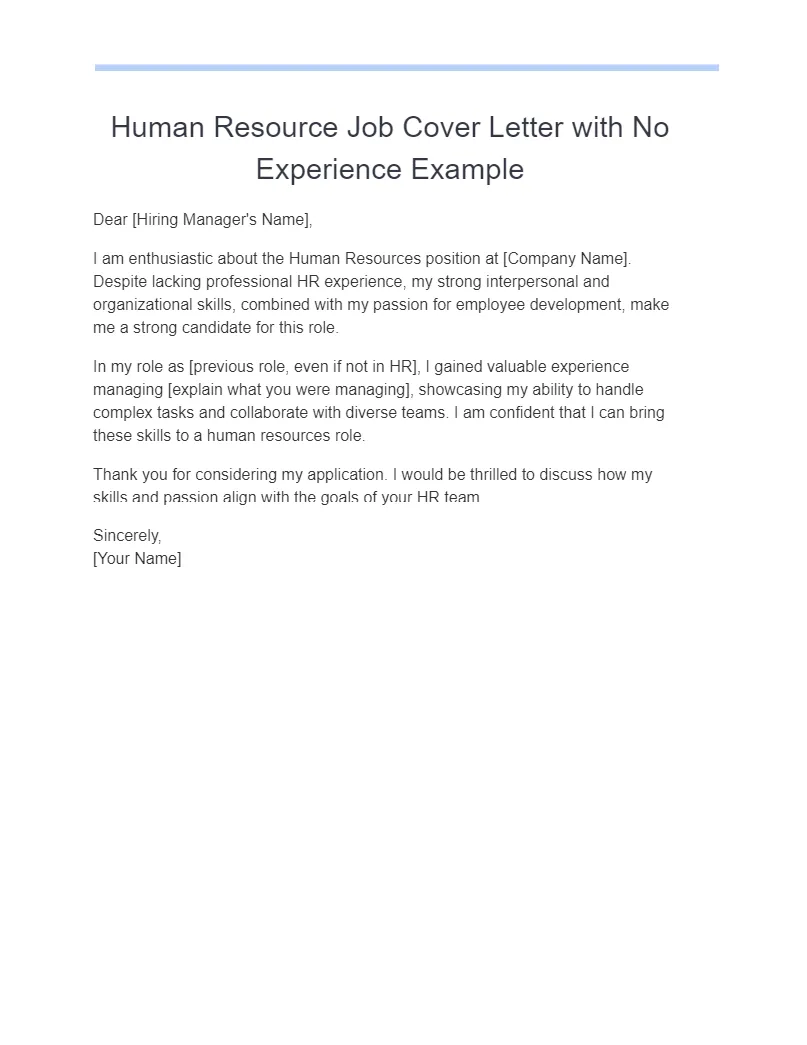
Start by making a list of all the skills you possess, regardless of how you acquired them. Think about the tasks you excelled at in school, any leadership roles you held, and the types of activities you enjoy. Were you a good listener and communicator? Did you successfully manage a team or complete a complex project? Did you have to solve problems creatively? Once you have a comprehensive list, prioritize the skills most relevant to the job you’re applying for. Carefully review the job description, and identify the key skills the employer is seeking. By aligning your skills with the employer’s needs, you demonstrate that you’ve done your homework and understand what the role entails.
Examples of Transferable Skills
Transferable skills come in various forms, so it’s important to recognize them. Communication skills might include writing reports, presenting ideas, or actively listening to colleagues. Problem-solving skills could involve troubleshooting technical issues, analyzing data, or developing creative solutions. Teamwork skills can be demonstrated through collaborative projects, participation in group activities, or leadership roles. Time management skills can be showcased by your ability to meet deadlines, prioritize tasks, and manage multiple responsibilities. By providing specific examples, you can show how you’ve successfully applied these skills in the past, even if those examples come from non-work experiences.
Showcasing Your Education & Training
Education and training play a vital role in demonstrating your capabilities and qualifications when you lack professional experience. In your cover letter, emphasize your academic achievements, relevant coursework, and any specialized training you’ve received. If you have a degree or diploma, mention it prominently and highlight any honors or awards. Also, showcase your soft skills acquired through academic endeavors. Were you a member of a debate team? Did you give presentations in class? These experiences help demonstrate your communication skills and your ability to think critically. Be sure to mention any relevant workshops, online courses, or certifications that align with the job requirements. They add credibility to your application and demonstrate a commitment to continuous learning.
Emphasizing Relevant Coursework
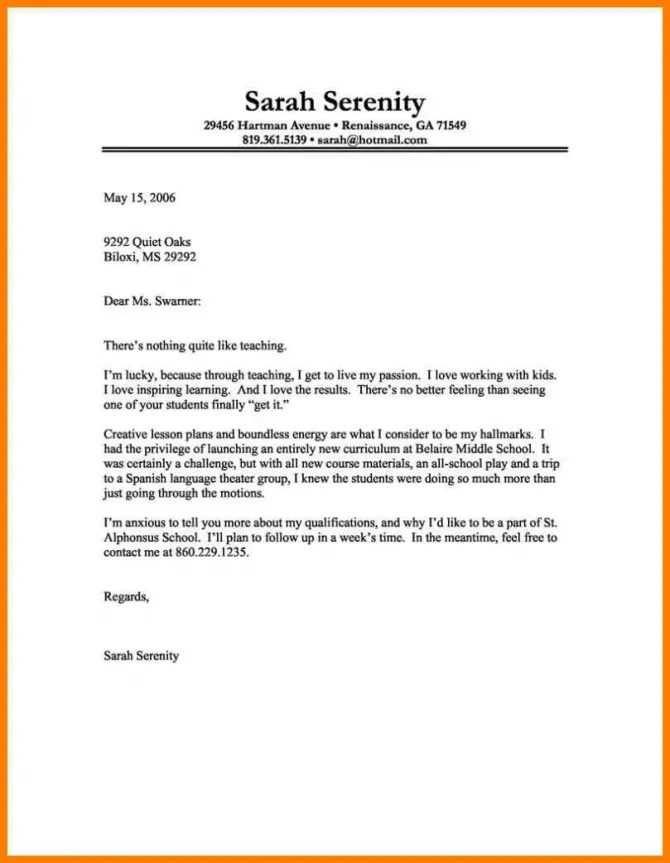
Even if you don’t have a degree directly related to the job, you can still highlight relevant coursework. Identify the specific courses that provided you with skills applicable to the role. For instance, if you’re applying for a marketing position, highlight any courses in communication, advertising, or consumer behavior. If you are applying for a technology position, note any programming, data analysis, or web development courses. Briefly describe the skills you gained in each course and how they align with the job requirements. This shows the employer that you have a foundation of knowledge and that you are prepared to apply your academic knowledge to the professional context.
Mentioning Projects & Assignments
Academic projects and assignments offer excellent opportunities to showcase your skills and abilities. Describe any projects that demonstrate your ability to apply your knowledge and learn new skills. Highlight your role in each project, what your contributions were, and what you learned. Did you lead a team? Did you develop a new product or service? Did you research a specific topic? Focus on the results you achieved, such as improved efficiency, cost savings, or increased customer satisfaction. By presenting your projects in a clear, concise, and results-oriented manner, you can make a compelling case for your skills even if you lack prior professional experience.
Leveraging Volunteer Work & Extracurricular Activities
Volunteer work and extracurricular activities can significantly enhance your cover letter by providing examples of your skills, demonstrating your commitment to community, and showing your ability to work as part of a team. Describe your responsibilities and accomplishments in each role, emphasizing any skills you developed or used. For example, if you volunteered at a local charity, you might highlight your communication skills, your ability to work with diverse groups of people, or your organizational skills. Be specific and provide concrete examples of your achievements. These experiences provide valuable evidence to support your claims and show employers that you’re resourceful, engaged, and capable.
Quantifying Your Accomplishments
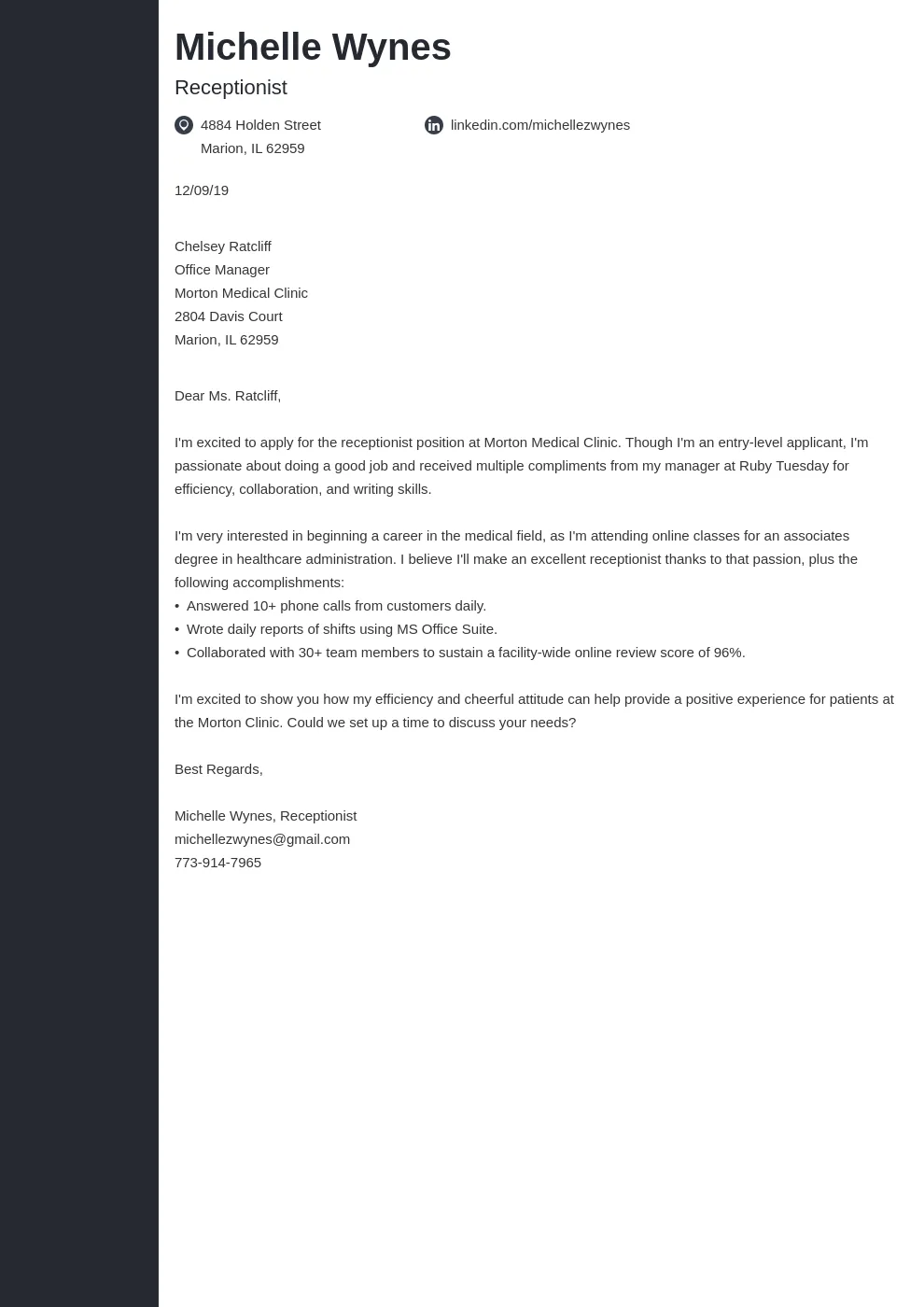
Quantifying your accomplishments is a powerful technique for making your cover letter more impactful and convincing. Whenever possible, provide specific numbers and data to support your claims. For example, instead of saying “I improved customer service,” say “I improved customer satisfaction scores by 15%.” Instead of saying “I managed social media,” say “I managed social media accounts for a volunteer organization, increasing followers by 200% in six months.” Use metrics and data to highlight your achievements in terms of sales, efficiency, cost savings, or any other relevant metrics. By quantifying your achievements, you provide evidence of your skills and capabilities, which can significantly increase your chances of landing an interview.
Tailoring Your Cover Letter to the Job
Personalizing your cover letter for each job application is essential for showcasing your suitability for the specific role. Carefully review the job description, and identify the key requirements and skills that the employer is seeking. Tailor your cover letter to address these requirements. Highlight the relevant experiences, skills, and accomplishments that align with the job description. Use keywords from the job posting throughout your cover letter to demonstrate that you understand the role and the company’s needs. By tailoring your cover letter, you show the employer that you have researched the company and that you are genuinely interested in the position. Do not send generic applications; customizing your cover letter increases your chances of being noticed and selected for an interview.
Researching the Company & Role
Before writing your cover letter, conduct thorough research on the company and the role. Visit the company website, read about its mission and values, and learn about its products or services. Also, read the job description carefully to understand the specific requirements and expectations of the position. Tailor your cover letter to align with the company’s culture and values. Address the hiring manager by name if possible, and highlight the specific aspects of the role that interest you most. Researching the company demonstrates your initiative and genuine interest in the position. Showing you understand their business and needs will make a great impression, making your application stand out and boosting your chances of success.
Using Keywords Effectively
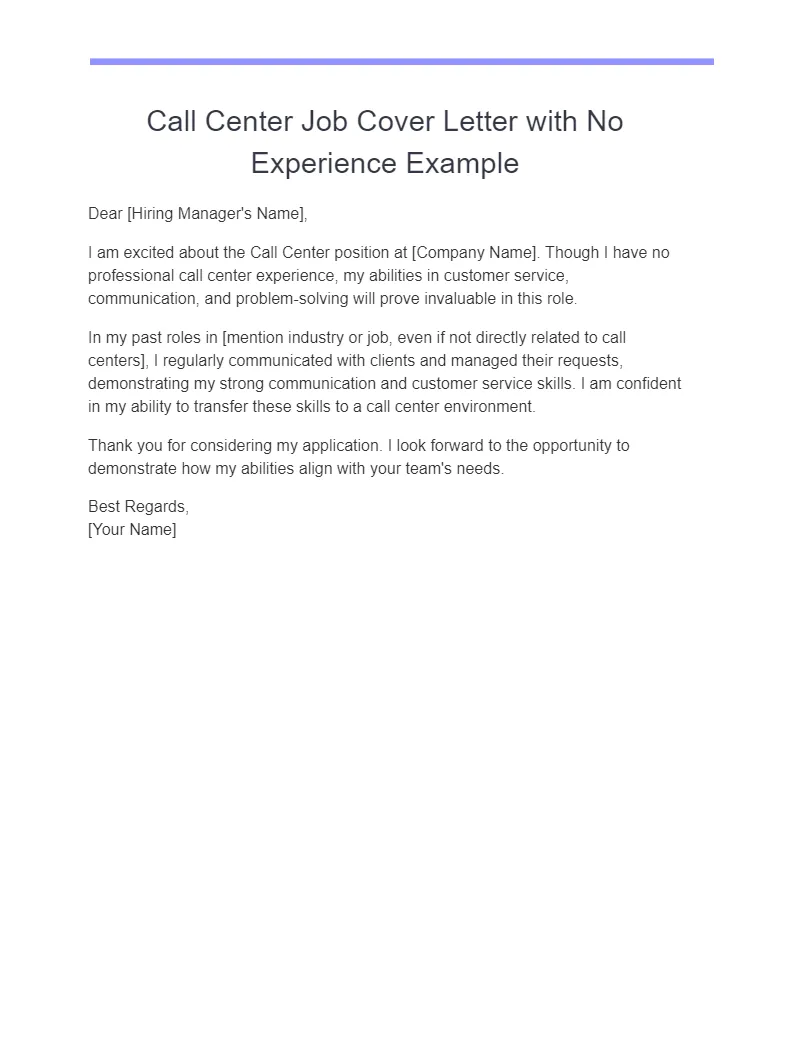
Keywords are crucial for both attracting the attention of the hiring manager and helping your cover letter get past applicant tracking systems (ATS). Identify the most important keywords from the job description and incorporate them naturally throughout your cover letter. Use the keywords in your skills, accomplishments, and qualifications sections. Make sure not to overload your cover letter with keywords, but use them organically to demonstrate your understanding of the job requirements and to optimize your application for ATS systems. By strategically using keywords, you will increase your visibility and maximize your chances of landing an interview.
Formatting Your Cover Letter for Impact
The format of your cover letter should be visually appealing and easy to read. Use a professional font such as Times New Roman, Arial, or Calibri, and use a font size between 10 and 12 points. Use white space to break up the text and make the letter more readable. Keep paragraphs concise and focused. Use bullet points to highlight your accomplishments and skills. Proofread your cover letter carefully to ensure that there are no grammatical errors or typos. A well-formatted cover letter demonstrates your attention to detail and professionalism.
Crafting a Compelling Opening
The opening of your cover letter is your chance to grab the reader’s attention and make a strong first impression. Start with a strong hook that demonstrates your enthusiasm for the role or company. You might mention a specific project or accomplishment that aligns with the job requirements. If you were referred to the position by someone, include the referrer’s name in the opening. Clearly state the position you are applying for and where you found the job posting. Also, express your enthusiasm for the opportunity and highlight any key skills or experiences that make you a suitable candidate. Aim to capture the reader’s interest from the beginning and entice them to continue reading.
Writing a Strong Body Paragraph
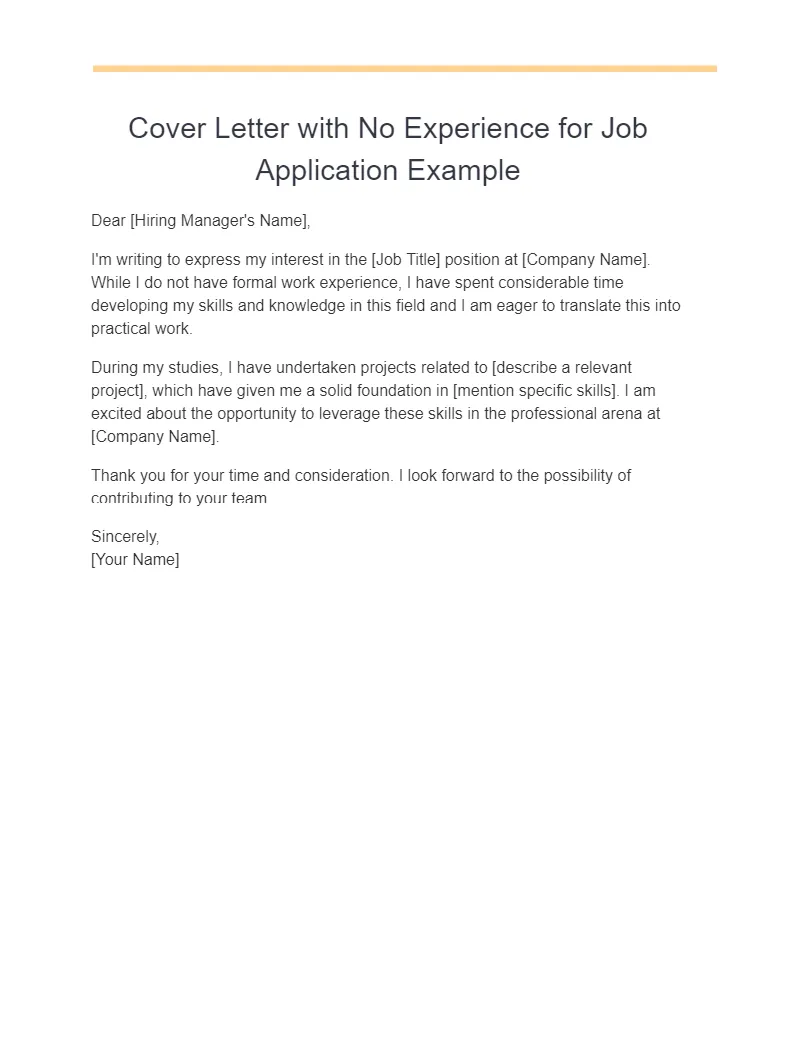
The body of your cover letter is where you will highlight your relevant skills, experiences, and accomplishments. Provide specific examples to support your claims. Use the STAR method – Situation, Task, Action, Result – to describe your achievements. For example, describe a situation you faced, the task you were assigned, the action you took, and the result you achieved. Also, emphasize your transferable skills and explain how they align with the job requirements. Use keywords from the job description to demonstrate that you understand the role and the company’s needs. Focus on what you can bring to the company and how you can contribute to its success.
Creating a Powerful Closing
Your closing paragraph should be impactful and leave a lasting impression. Reiterate your interest in the position and express your enthusiasm for the opportunity to interview. Reiterate key skills or experiences that make you a suitable candidate. Thank the hiring manager for their time and consideration. Include a clear call to action, such as encouraging the hiring manager to contact you to schedule an interview. Proofread the entire cover letter before submitting it. Make a positive and professional closing that will encourage the hiring manager to reach out to you.
